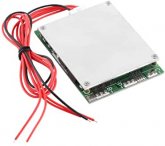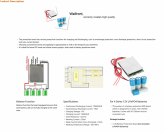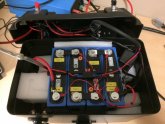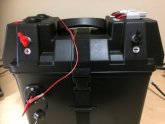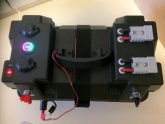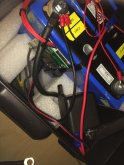Pierre
Somewhere down South
- Joined
- Dec 21, 2019
- Messages
- 1,147
a While ago I bought this tiny Split Port 4S BMS on Amazon for about $10 . Rated at 100 amp , so I was not convinced. It arrived in a little brown box without any label , spec sheet or user manual. Obviously some kind of bypass relay had to be used to handle the current , so I hooked it up to a automotive 12v Cole Hersee 85 amp relay. Unfortunately, as Steve said, these relays are power hungry and this one requires 750mA to energize and it gets quite warm to the touch. I would like to replace it with a SSR and waiting for Steve & Co to come up with a cost effective unit.
The present setup for testing is as follows : Victron 230v 1200W inverter , Victron 12v 10/20 amp charger , charging at 10 amps and load drawing about 38 amps ( as shown on the Drok ) and resultant current out of the battery is 28 amps ( as shown on the Hall effect meter ). I am monitoring the cells V as it charges and cells delta is 8mV. Will post further result as tests progress. Also looking on the wide web for further info on this BMS.
It shows that you do not need an expensive BMS to control things.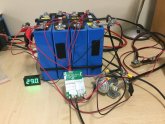

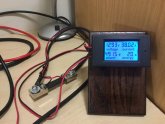
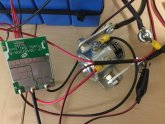

The present setup for testing is as follows : Victron 230v 1200W inverter , Victron 12v 10/20 amp charger , charging at 10 amps and load drawing about 38 amps ( as shown on the Drok ) and resultant current out of the battery is 28 amps ( as shown on the Hall effect meter ). I am monitoring the cells V as it charges and cells delta is 8mV. Will post further result as tests progress. Also looking on the wide web for further info on this BMS.
It shows that you do not need an expensive BMS to control things.








